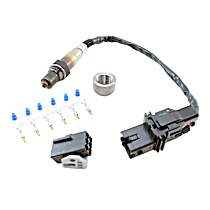{
"lazyNodes": false,
"abFitnotesFlag": false,
"abCrawlReviews": true,
"productOptionsCookie": false,
"orderDelayFlag": false,
"skipSessionCookie": false,
"covidMessage": false,
"fullTitleCookie": false,
"nrLoggerCookie": true,
"checkoutReviewCookie": false,
"productOptionSeqCookie": false,
"maintenanceFlag": false,
"bufferETACookie": false,
"multiShippingDiscountFlag": false,
"newFitmentFlag": false,
"surveyOptInFlag": true,
"crossSellFlag": false,
"skuMappingFlag": false,
"paySplitCookie": false,
"callDisableFlag": true,
"zipPaymentFlag": "c",
"hassleFreeReturn": true,
"lifetimeReplacement": true,
"cpn_off": false
}AEM Oxygen Sensors
Shop Catalog
![]() WARNING: This product can expose you to chemical which is known to the State of California to cause cancer and birth defects or other reproductive harm. For more information go to www.P65Warnings.ca.gov.
WARNING: This product can expose you to chemical which is known to the State of California to cause cancer and birth defects or other reproductive harm. For more information go to www.P65Warnings.ca.gov.
![]() WARNING: This product can expose you to chemical which is known to the State of California to cause cancer and birth defects or other reproductive harm. For more information go to www.P65Warnings.ca.gov.
WARNING: This product can expose you to chemical which is known to the State of California to cause cancer and birth defects or other reproductive harm. For more information go to www.P65Warnings.ca.gov.
Customer Guides
AEM is well known in the auto enthusiast communities for its aftermarket performance electronics, and one of the best sellers is the AEM oxygen sensor. Designed for use with AEM wideband air/fuel controller, AEM’s O2 sensors are said to be laboratory-calibrated at the Bosch factory for precision accuracy. In this review, we tested several AEM oxygen sensors to determine if they are truly accurate or not.
Features:
- Sealed sensor housings
- Laser-etched, calibrated resistor
- Accurate to 0.1 AFR
- Does not require free-air calibration when used in conjunction with an AEM controller and connector plug
- Designed for use with AEM Wideband UEGO controllers
- Includes sensor, weld-on bung, connector, wire seals and pins
The upside:
- Easy to install. The sensor came with a three-wire mating connector with 12” leads, so all we had to do is to plug and play.
- Reliable readings. The sensor performed adequately, especially when we paired it with an AEM gauge. The air/fuel mixture was constant, and the emissions were well within acceptable range.
- Sturdy construction. The body is made of hardened stainless steel. AEM certainly did not skimp on the quality of its parts. We also did some stress and drop tests and the sensor, with the seals in particular, held up rather well.
The downside:
- Will only work with AEM controllers. This wouldn’t be much of a problem if you already have an AEM controller system installed, but if your vehicle still has its stock controller or one from a different aftermarket brand, the sensor will not display accurate readings. Basically, if you opt to get this sensor, you will need to invest in an AEM controller as well.
- High price. The last time we checked, AEM oxygen sensors were going $50-$100 dollars in some online stores, which is far higher than your typical OEM oxygen sensor.
The bottom line:
The AEM oxygen sensor definitely lives up to AEM’s reputation of producing quality performance parts. The sensor performed adequately, and its solid construction and craftsmanship will definitely see it years of optimum use. However, the sensor will only provide these if they are coupled with an AEM controller system. Add this with the sensor’s relatively high price tag, and you will definitely have to shell out a bit more cash than you would if you decided to get a replacement OEM sensor instead. But with its durability and performance, the money will still be worth it.




